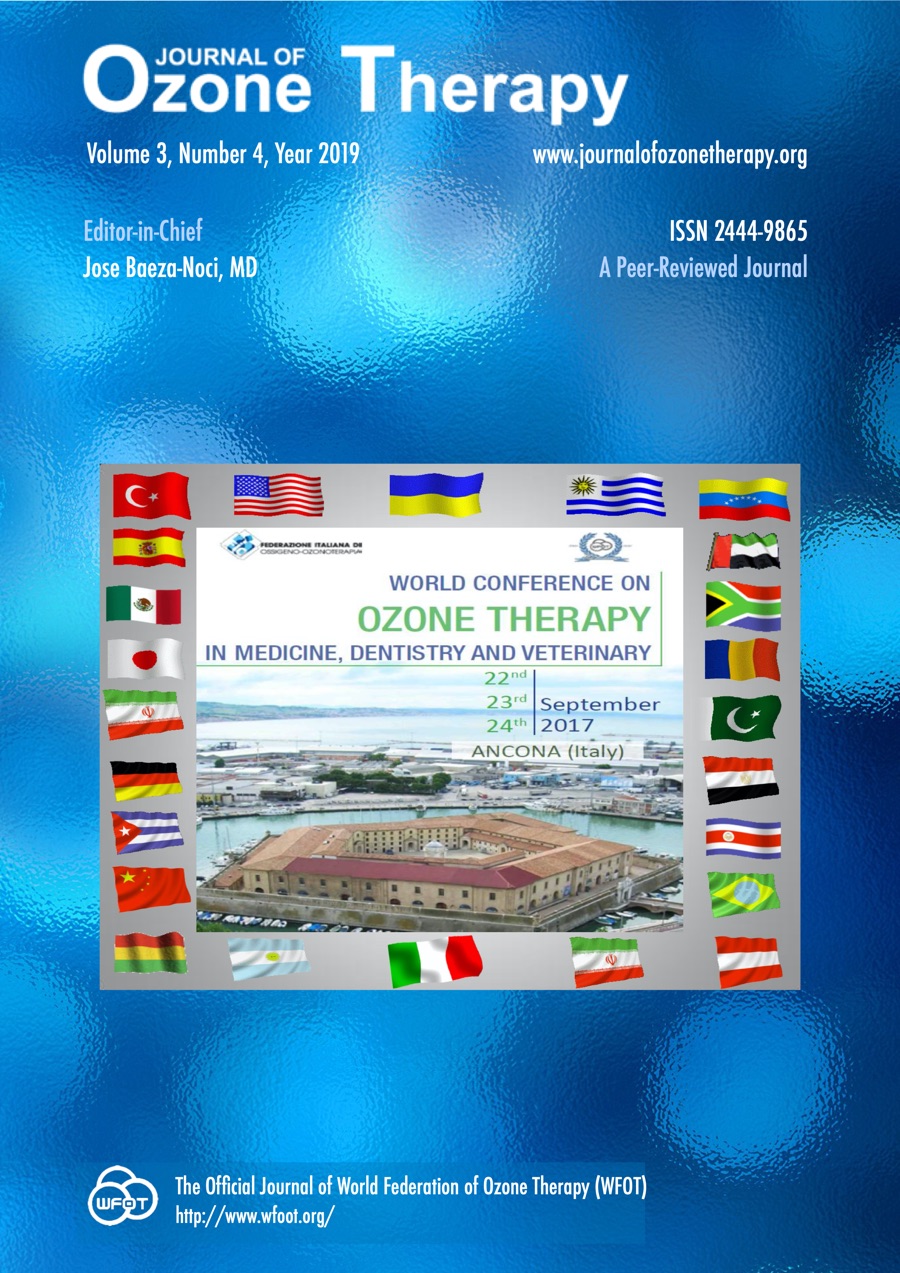Ozone Therapy in Idiopathic Carpal Tunnel Syndrome. Biochemical, Neurophysiological and Clinical Aspects [abstract]
DOI:
https://doi.org/10.7203/jo3t.3.4.2019.15530关键词:
carpal tunnel syndrome, ozone therapy 摘要
摘要
PURPOSE: Idiopathic Carpal Tunnel Syndrome (CTS) is the most common entrapment neuropathy.
The aim of the paper was to design a prospective study to evaluate clinical and neurophysiological outcome following Ozone Therapy .
We also focusing the attention on the evidences concerning the role of Subsynovial Connective Tissue (SSCT )in the pathogenesis of CTS and the ozone pre-conditioning effects linked to pain pathways and to fibrosis induced by Ischemia-Reperfusion Injury.
MATERIALS and METHODS: Thirty-one patients, aged between 36 and 86 23 women and 8 men), were stratified clinically by Boston Carpal Tunnel Questionnaire (B.C.T.Q.) and Neurophysiologically by Padua’s Gravity Scale classifying patients into five Electro-myographic categories (Minimal, Slight, Moderate, Severe and Extreme) . The mean symptom duration was also recorded.
The patients included in the B.C.T.Q. underwent diagnostic neurophysiological tests, strictly standardized in stimulation parameters, electrodes distances and skin temperature, before and after treatment.
The Ozone Therapy was performed by injecting 4 ml of O3-O2 mixture at 10 mcrg/mL concentration under the transverse carpal ligament twice a week for eight sessions.
RESULTS: We compared the B.C.T.Q. scores and the neurophysiological parameters obtained before and after O2-O3 treatment: the improvement of symptoms was significantly greater than the improvement of motor and sensory nerve conduction.
The highest clinical improvement degree was found in patients classified in Slight and Moderate Groups.
DISCUSSION: Chemical mediators, neo-angiogenesis and Ischemia-Reperfusion Injury lead to oxidative stress and non-inflammatory fibrosis that play a central role at various stages in CTS pathogenesis that can be recognized by clinical and neuro-physiological tests.
Further studies have to be carried out to better understand these relationships and optimize timing of Ozone Therapy.
 Downloads
Downloads
 参考
参考
Alfonso C, Jann S, Massa R, Torreggiani A. Diagnosis, treatment and follow-up of the carpal tunnel syndrome: a review. Neurolog Sci. 2010;31(3):243-252. doi: 10.1007/s10072-009-0213-9.
Bonetti M. Oxygen-Ozone Therapy: Brief historical review and mechanism of action. Int J Ozone Ther. 2007;6(2):143-144.
Chammas M, Boretto J, Burmann LM, Ramos RM, Dos-Santos-Neto FC, et al. Carpal tunnel syndrome – Part I (anatomy, physiology, etiology and diagnosis). Rev Bras Ortop. 2014;49(5):429-36. doi: 10.1016/j.rboe.2014.08.001.
Downloads
已出版
How to Cite
-
摘要466
-
PDF 251
期
栏目
License
Journal of Ozone Therapy applies the Creative Commons Attribution-NonCommercial 4.0 International License (CC BY NC 4.0) license to works we publish.
Under this license, authors retain ownership of the copyright for their content, but allow anyone to download, reuse, reprint, modify, distribute and/or copy the content as long as the original authors and source are cited. No permission is required from the authors or the publishers.
You may not use the material for commercial purposes.
Appropriate attribution can be provided by simply citing the original article, provide a link to the license, and indicate if changes were made.
You may do so in any reasonable manner, but not in any way that suggests the licensor endorses you or your use.




